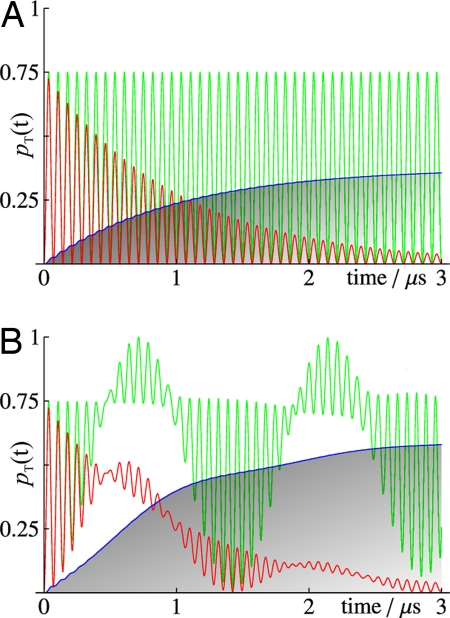Fig. 2.
Quantum mechanical spin dynamics simulations for the reaction in Fig. 1, performed as described in ref. 60. (A) In the absence of the magnetic field and with no recombination (green), the fraction of radical pairs that exist in the triplet state, pT(t), oscillates at the frequency of the hyperfine coupling (here 14 MHz). (B) When a weak magnetic field is introduced (green), pT(t) shows an additional, slower, modulation at the frequency of the Zeeman interaction (here 1.4 MHz). The radical pair reactions cause pT(t) to be exponentially damped (red) and allow the reaction product (species C in Fig. 1) to accumulate (blue). The applied magnetic field (50 μT) results in an increased transient conversion of the radical pair into the triplet state, causing C to be formed more rapidly and in higher yield. Faster recombination than shown here would allow scant time for the slow modulation arising from the Zeeman interaction to alter pT(t); the yield of C would then be much less affected by the field. For details of the calculation, see SI Appendix.

